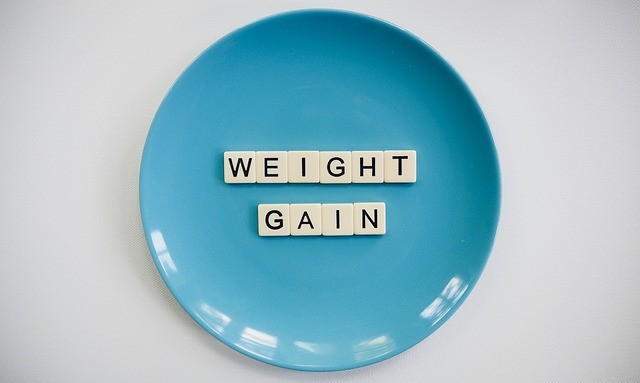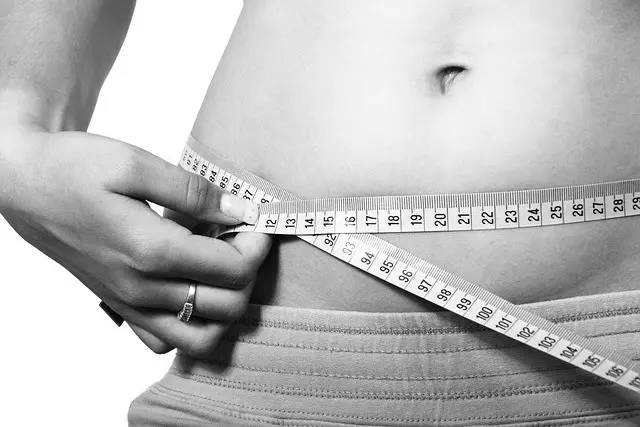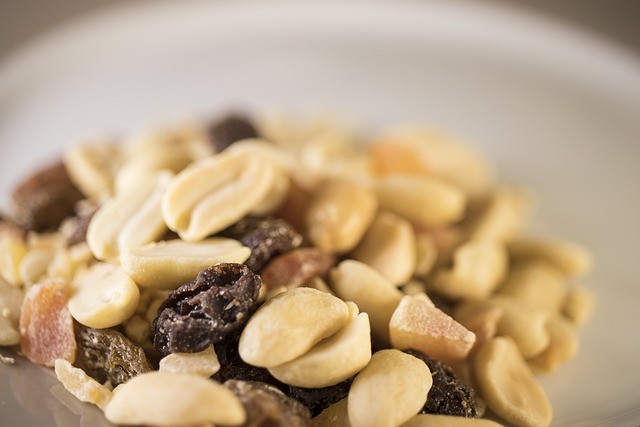The keto diet has been in the spotlight for its weight loss benefits. What you need to pay attention to is your macronutrient ratio, to find a good balance to help you lose weight. These macronutrient ratios are highly dependent on your goals, whether they are to lose weight, muscle building, weight gain, or for overall health.
Keto is described by focusing on three macronutrients, carbohydrates, protein, and fat. The diet assists you to lose weight, so the macronutrient distribution is the high fat intake, low carb consumption, and moderate protein intake. Why is the macronutrient ratio balance important in keto?
In this article, we will discuss the three macronutrients, carbohydrates, protein, and fat. Our major focus will be to find the best macronutrient ratio of protein, carbs, fat for different health goals. What is the protein, carbs and fat ratio for weight gain, weight loss, weight maintenance, and building muscle mass?
What are Macronutrients?
Macronutrients refer to nutrients in the diet that are required in large quantities for energy balance. What determines a nutrient as “macro” is how many total calories it can produce to meet the body’s daily energy requirements. There are three macros in your diet namely carbohydrates, protein, and fat.
Carbohydrates

Carbohydrates are considered macronutrients because they are your body’s primary source of energy. They are broken down to produce glucose through a process known as glycolysis. Blood sugar from carbs is an instant source of energy, and in excess is stored in the liver as glycogen.
There are two types of carbs in your diet: simple and complex carbohydrates. Simple sugars are those that can be quickly digested to release glucose to the bloodstream and complex carbohydrates are those that take longer to be digested and absorbed into the bloodstream. Carbohydrates give you 4 calories per gram consumed.
Protein

Proteins are an important macro considering there are functions unique only to proteins. They are needed for muscle building, transporting other nutrients, and building important structures of the brain, skin, and other systems. Amino acids are the building blocks of protein.
In the absence of glucose, proteins are broken down to produce glucose through a process known as gluconeogenesis. This glucose is used for energy. Your body can make 11 amino acids and get 9 from your diet.
You can get these building blocks in your foods from either complete proteins or incomplete proteins. Complete proteins are from animal sources eggs, meat, poultry, and sea foods and they provide your body with all the amino acids it needs. Incomplete proteins are mostly plant-based proteins like nuts and seeds that will provide you with some, but not all of them. You will get 4 calories per gram of protein consumed.
Fat
Fat, although has had a bad press in the past, is necessary for insulation, protection of vital organs, and maintaining proper cell function. During fasting or starvation, fats are broken down to release ketone bodies for energy through a process known as ketosis.
When finding the best protein, carbs, and fat ratio, you need to remember that you can get twice the number of total calories from fat from the same amount of protein and carbs consumed. You will get 9 calories per gram of fat consumed in your diet.
Your diet should be high in healthy fats rather than unhealthy kind. Keep off trans fat and excess saturated fat from processed foods and convenience foods. Consume moderate saturated fats from healthy fats like coconut oil. The fats you should be consuming are unsaturated fat, both monounsaturated fats and polyunsaturated fats from seafood, olive oil, poultry, and meats.
Before taking a look at the protein, carbs, and fat ratio, let’s take a look at counting calories and whether you should focus on caloric intake rather than macronutrient intake.
Tracking Calories Vs Macros
Calorie counting and tracking macronutrients are both relevant, and the best method depending on your goals.
When to Track Calories
If your goal is weight management, whether weight gain or weight loss, then calorie counting is the best method for you. The only way to reduce body weight is by creating a calorie deficit from your maintenance calorie intake. This means you need to consume fewer calories than your body requires to maintain your body weight. You should create a deficit of 500-1000 calories per day, depending on how much weight you want to lose.
For gaining weight, a calorie surplus is needed, meaning you need to eat more than what your body needs to maintain your body weight. If you’re trying to gain, create a surplus of 200-1,000 calories per day, depending on how much weight you want to gain.
However, many factors affect weight maintenance, calorie intake being one of them, but not the only one.
When to Track Macronutrients

Tracking macronutrients is done to meet specific goals. When tracking macros, you don’t focus only on one number, but on the intake of the three macronutrients. People with certain medical conditions like diabetes, individuals trying to meet fitness goals, and also those on a weight loss journey can alter the intake of certain macronutrients to help them achieve their goals faster.

This is why the protein, carbs, and fat ratio is important. For example, active individuals need more of their calories from protein for good performance. Those who want to lose weight could meet their goals faster if they got their calories from fat. Getting most of your calories from carbohydrates will come in handy if you are trying to gain weight. In terms of high carbohydrate intake, your food choices matter. Consume whole foods rather than refined carbs when trying to gain weight.
In the argument of whether to track calories or macronutrients, the best method depends on what you’re trying to achieve.
Protein, Carbs, and Fat Ratio
All your macronutrients are important, so any diet that severely restricts any macro should be avoided. The USDA has recommendations that tell you how many calories per macro you should consume to balance your intake. It is recommended that you should get:
- 40-65% of your calories from carb intake
- 10-35% of your calories from protein
- 20-35% of your calories from fat
These dietary recommendations are very broad and are for your overall health. But, which macronutrient composition will be best to meet your goals?
What is the Zone Diet, 40-30-30?

The general population may be trying to find the perfect balance of their macros and most end up starting with the zone diet. The 40-30-30 macronutrient ratio distributes calories in the following ways:
- 40% of calories are obtained from carb intake
- 30% of calories obtained from protein intake
- 30% of calories obtained from fat intake
The total calories consumed are not the point of focus rather than where the calories are from. The 40-30-30 diet is beneficial since it advocates for a balanced diet. Moreover, dietary protein intake is from lean protein and dietary fats from healthy fat sources. On this diet, exercise is recommended.
This recommendation is not specific to any goals. The good news is recent research has narrowed down the traditional macronutrient recommendations to meet specific goals.
Carb, Protein, Fat Ratio for Weight Loss

The best diets to help you lower your body weight are low-carb. Research suggests that low-carb diets, specifically the standard ketogenic diet is best for weight loss and managing metabolic syndrome.
What is the Best Macro Ratio for Fat Loss
When comparing the Mediterranean diet and the very-low-calorie ketogenic diet (VLCKD), a study showed that you can achieve a 5% weight reduction on a VLCKD in a month compared to 3 months on a Mediterranean diet. Low carb diet reduces weight by promoting fat loss by lowering body fat percentage and fat mass. Weight loss is not from lean mass but from water and fat loss.
This is because when you restrict carbs, glucose, and insulin levels drop, forcing your body to break down body fat which triggers fat loss. Increasing fat intake keeps your body in ketosis, which will increase your chances of losing fat.
The protein, carbs, fat ratio on a keto diet are as follows:
Fat Intake
The keto diet recommends getting 60% to 80% of your calories from fat. Dietary fats will provide your body with essential fatty acids for optimal body function. The sources of healthy fatty acids in keto are nuts and seeds, coconut oil, olive oil, and high-fat dairy products.
Protein Intake
You should get 20% to 25% of your calories from protein intake on keto. Protein intake is from high-quality proteins like eggs, poultry, seafood, and lean meats. This will promote fat loss and maintain lean mass. Plant-based proteins are avoided because they are high in carbs and will kick you out of ketosis.
Carb Intake
Carb intake is restricted to 20 g to 50 g per day, which accounts for 5% to 10% of your total calories. Your main sources of carbs are non-starchy vegetables like spinach, kale, brussels sprouts, and bell peppers. Fruits are restricted since they are high in sugar and they can spike your blood sugar levels, kicking you out of ketosis.
You need to remember that to lose fat or weight, your gender and age matter because your nutrition demands vary with gender and age. When trying to lose weight and you’re not eating keto, get 45% to 50% of your calories from carbohydrates. Stick to food that is low in glycemic index and glycemic load.
Best Carb, Fat, Protein Ratio for Lean Muscle

Your nutrient demands are different for active individuals. Your nutrition is important when working out to provide energy for your exercise and for recovery to help you meet your fitness goals.
Your macronutrient ratio will depend on the type of exercise you are doing and the duration of your workout. Different workouts are fueled by different metabolic pathways, meaning they require different macronutrient ratios.
High-intensity exercise like heavy weightlifting gets their energy from the phosphagen system. A high carbohydrate diet would provide the instant energy needed to fuel this workout.
Moderate-intensity exercise like running and high-intensity interval training (HIIT) depend on the glycolytic system for energy. These are fueled by glucose from carbohydrate intake.

Low-intensity exercise or aerobic exercise gets their energy from ketosis. Your performance will drop at the start of your workout on keto but will get better as your body becomes fat-adapted.
Generally, any registered dietitian would recommend you eat more protein when working out because your metabolic rate rises and nutrient demand increases. The International Society of Sports Nutrition recommends the following protein intake at different activity levels:
- 1-1.6 g/kg/ day of protein on endurance workouts
- 1.6-2 g/kg/day of protein on strength exercise
- 1.4-1.7 g/kg/day of protein in intermittent sports like football
- 1.4 g/kg/day of protein on cardio
- 0.8-1.0 g/kg/day of protein for general fitness
When it comes to carbohydrates, it is essential when exercising because it fuels high-intensity exercise and it preserves muscles that maintain muscle mass. The recommended carbohydrate intake for exercise is:
- 2-5 g/kg/day for active individuals (45% to 55% of total calories)
- 5-8 g/kg/day for high-intensity workouts, 4 to 6 days a week (55% to 65% of total calories)
- 3-5 g/kg/day for low-intensity workouts like aerobic exercise
Fat intake is necessary for energy, remember you will get more energy from fat intake than other macros.
- Active individuals: 0.5-1.0 g/kg/day (25% to 35% of total fat)
- High-intensity training: 0.5-1.0 g/kg/day (30% of total fat)
- Low-intensity exercise: 50% to 70% of total fat
The targeted ketogenic diet allows you to incorporate carbohydrates into your workout. This way your body meets the carbohydrate needs of high-intensity exercises, which can be completely broken down for your body to achieve ketosis.
When it comes to nutrient balancing, you need to know that low nutrient intake means you’re replacing those missing calories with something else. If you’re trying to lose fat, restrict carbs, eat more protein, and replace missing calories with healthy fats, although not from vegetable oils.
A high fat-to-muscle ratio has been associated with chronic diseases like diabetes, heart disease, and metabolic syndrome. What you eat plays a significant role in maintaining your immune system and overall health.
Macronutrient ratio is not only about the number of nutrients you are consuming but should also focus on the nutritional value of a food.
Quality Over Quantity
What benefits a nutrient has to your health should be the primary point of focus when choosing food sources for your macros.
Choose Nutrient Dense Foods
These foods are rich in nutrients that are necessary for your health. They are also low in calories which makes them good for weight management. Any food high in lean protein, healthy fats, fiber, vitamins, and antioxidant has numerous health benefits and should be part of your daily diet.
When on keto, pick whole foods over refined ones. Although some foods like fruits, legumes, and whole grains are considered good for proper nutrition, they are not allowed on a keto diet. Pay close attention to this.
However, on a targeted keto diet or general healthy eating whole foods like whole grains are nutrient-dense foods and should be chosen over processed or refined foods.
Eat High-Quality Protein Foods

A study comparing the effects of an energy-restricted, high-protein, low-fat diet, and a standard protein, low-fat diet showed that a high-protein diet significantly reduced body weight, fat mass, and triglycerides and mitigated reduction of fat-free mass. This study proved that altering the carbohydrate-to-protein ratio of low-fat diets can augment weight loss.
Proteins promote satiety and reduce hunger which lowers food intake. They are also necessary for muscle building and preventing the loss of muscle mass. You need to increase your protein intake when exercising to aid with recovery. A high-protein ketogenic diet would be the best fit for someone trying to lose weight and build muscle mass.
Limit High Carbohydrate Foods and Unhealthy Fats

Nutrition plays a big role in disease pathophysiology, which means what you eat can affect your health. Carbohydrates are the main cause of inflammations which lead to the development of chronic disease.
High carbohydrate foods will spike your insulin levels leading to insulin resistance. Trans fats and excess saturated fats will also increase your risk of developing heart disease. Consumption of excess carbs and unhealthy fats increases sugar cravings which can cause binge eating.
The best combination would be eating low carbohydrate food and healthy fats with moderate protein and high fiber to increase satiety and prevent blood sugar spikes. If you’re not eating low carbs, avoid sugary foods like baked products and replace them with healthier carbs like fruits, starch veggies, and whole grains.
What are the Health Benefits of Tracking Macros?
Here are the nutrition benefits of tracking carbohydrate, protein, and fat intake:
- Improves the quality of your diet: You’re not focusing only on how much food you are consuming but are also looking at where your calories are coming from, and choosing food based on their nutritional value.
- Weight management: altering your macronutrient ratios can help you either gain weight or lose it faster without compromising muscle integrity.
- Good for goal attainment: If you have specific nutrition or fitness goals, then tracking macros would be more effective than calorie counting.
The major disadvantage that comes with tracking macros is the risk of disordered eating. Since it involves measuring, weighing, and recording macros, one can get obsessed with this habit. People with a history of eating disorders should be on follow up by their healthcare providers when tracking their macronutrient intake.
Final Thoughts
The best macronutrient ratio depends on your goals, and what are you hoping to achieve with your nutrition. Individuals trying to lose weight will get better results when they increase their intake of healthy fats, those trying to gain weight should increase their intake of healthy, whole carbs and active individuals require more calories from protein intake.
It’s not a one size fits all scenario. Speak to your dietitian to come up with an all-inclusive meal plan that is specific to your goals. Always remember to go with quality over quantity!
What are your health goals for altering your macronutrient ratios? With these goals in mind, is your carbohydrate, protein, or fat ratio the highest? Let us know in the comments below!








